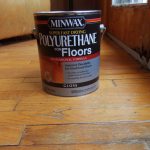Can You Stain Wood In Cold Weather? Here’s The Answer
It’s true that temperature may make or ruin your wood staining project. Having said that, we have one big question for the day.
Can you stain wood in cold weather? For best results, it’s generally not a good idea to stain wood if temperatures dip below 50 Degrees Fahrenheit. However, some wood stain brands, specifically oil-based ones, have lower temperature thresholds for cold-weather applications.
But it’s not just about the temperature; humidity and rain are also significant considerations. Read more on the effects of cold weather on wood stain and what temperature is too cold to stain wood.
Can You Stain Wood In Cold Weather – Digging Deeper
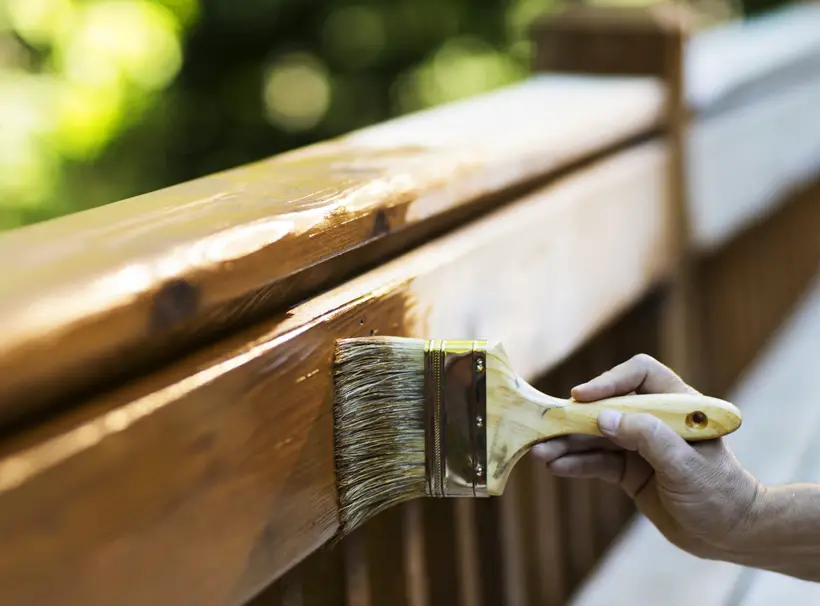
No, you should not stain wood if the temperature is below 50° F. However, it depends on a few factors. This table highlights key considerations and why they matter.
| Factor | Effect On Staining |
|---|---|
| Temperature | Generally, the colder it is, the more challenging it will be to achieve a good finish. Once the temperature drops below around 45-50 degrees F, stain absorption and drying time become noticeably slower |
| Type of stain | Oil-based stains are more tolerant of temperature than water-based wood stains. In fact, some oil-based brands are formulated to work down to around 35 degrees F |
| Humidity levels | High humidity causes wood to absorb less stain, leading to an uneven or splotchy finish. Typically, humidity levels of 40%-70% are optimal for staining. If it climbs above 70%, problems are more likely |
| Rain | Rain or snow will likely wash away uncured stains. Also, it may cause blotchiness as moisture redistributes in the wood after the rain. For this reason, stain wood if no rain is expected for 24 hours. |
From our analysis, it’s clear that there are many factors at play. Nevertheless, we can draw a logical conclusion.
Better results are guaranteed if the temperature is at least 50 degrees F with 40%-70% humidity and no likelihood of rain. This is regardless of whether you use oil-based or water-based wood stains.
One reassuring thing is that humidity tends to be lower in cold weather compared to warmer seasons. The primary explanation is that, as the air cools, its ability to hold water vapor decreases.
So cold water becomes drier and less humid. This can actually work in your favor if you’re staining wood in the fall or winter.
Effects Of Cold Weather On Wood Stain
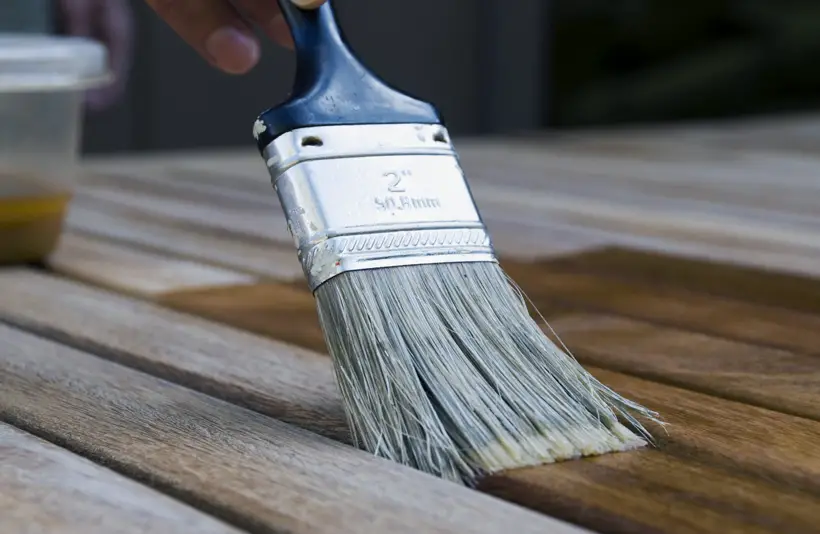
Let’s have a look at how cold weather affects the wood stain below.
Delayed Curing
Prolonged curing time affects the project timeline. It happens in two ways:
- Uneven gloss: This is often an issue with oil-based wood stains. It so happens that slow curing results in inconsistent cross-linking of polymers. Ultimately, it causes variation in gloss between areas of the surface.
- Poor color development: The slower chemical reactions in cold temperatures can impair the stain’s full-color development. This may leave it looking dull or faded.
Insufficient Penetration
If temperatures dip below freezing, the cell walls inside the wood contract and become tighter. This makes it more difficult for stains to penetrate deeply into the wood cells.
That being said, the wood will only absorb stains on the surface, leaving the inner layers untreated. This leads to a stain that’s significantly lighter than intended. After all, the stain fails to reach the depth needed to develop the full color.
Delamination/Flaking
Delamination is another potential issue with staining wood in cold weather. Essentially, it refers to the stain freezing or failing to fully adhere to the surface of the wood.
Typically, this happens when staining in very cold temperatures below around 35 degrees F. The explanation is that, as you apply stain, the outside of the stain may start to freeze and harden before the stain has time to fully penetrate the wood.
What Temperature Is Too Cold To Stain Wood?
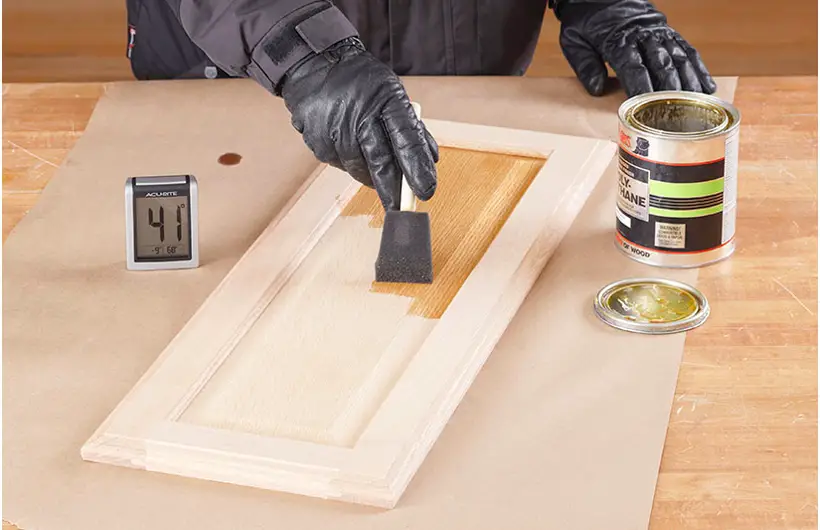
The general guideline is that temperatures below 50 degrees F can make wood staining more difficult. Below 35 degrees F, staining wood becomes unadvisable.
Here’s a table highlighting some specifics:
| Temperature Range | Effect On Staining |
|---|---|
| Above 50℉ | Staining wood becomes noticeably easier. Stain absorption, drying time, and penetration improve dramatically |
| 45°-50°F | Stain absorption and drying time become noticeably slower |
| 35°-45℉ | Even “cold-rated” oil-based stains may have trouble drying properly and fully adhering to the wood. Blotchiness and patchiness become issues. Pre-warming wood may help |
| Below 35℉ | Most stains struggle to perform adequately at this temperature |
| Below freezing (32 °F) | In general, it’s best to avoid staining wood at this temperature |
Techniques To Help With Staining Wood In Colder Temperatures
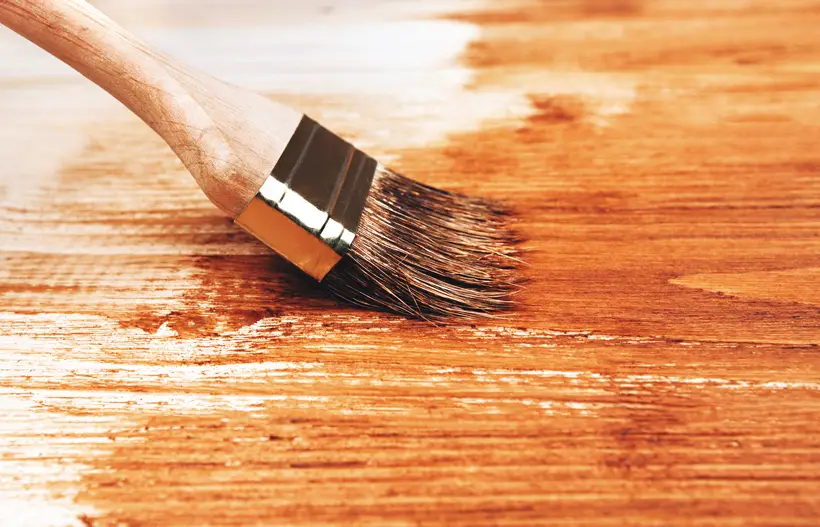
You can still get a uniform finish when staining wood in cooler months below 50 degrees F. Here are some techniques to compensate for temperature challenges.
| Technique | How To |
|---|---|
| Pre-warm or heat the wood | Use a heat gun, hair dryer, or heat lamp to raise the wood’s surface temperature before staining. This should help the wood cells absorb more stain. Aim for 65°-80℉ |
| Sand the wood well | Thoroughly sand the wood to open up the grain and pores. This should allow the stain to penetrate deeper. Use 150-grit to 220-grit sandpaper |
| Wipe on a wood conditioner | Pre-stain wood conditioners will help even out stain absorption and reduce blotchiness. They’ll fill the wood grain temporarily |
| Apply multiple thin coats | Instead of one thick coat of stain, apply 2-3 coats with drying time in between. This promotes deeper penetration and a more even finish |
| Allow extended dry times | Allow double the normal drying time. Wait overnight if possible |
| Keep wood warm after staining | Use heat lamps or your room’s heating system to keep the wood’s surface temperature above 50℉ as the stain dries |
| Use an oil-based stain | Oil-based stains are more tolerant of cold temperatures than water-based stains. Choose brands that are formulated for temperatures below 35℉ |
Also, you can stain wood inside the house. You’ll benefit from warmer temperatures, low humidity, and protection from the elements. Plus, you have more control over the conditions.
Can Wood Stain Be Left In The Cold?
Yes. You can leave wood stains outside in the cold for short periods of time, most especially in freezing temperatures. But once a stain freezes, it’s difficult to restore its original consistency and performance.
Freezing and thawing, for instance, can cause pigment particles in water-based stains to settle out of suspension. On the other hand, it will cause the solvents to separate and become thick in oil-based wood stains.
The ideal temperature to store the wood stain
So, it would be prudent to store wood stains indoors where the temperature doesn’t drop below 32℉. Ideally, you want to aim at indoor storage conditions of 65°-75℉.
Under these conditions, you can expect a can of water-based stain to last 1 year opened and 2 years unopened. An oil-based stain will last 1 year opened and 2-3 years unopened.
Best Wood Stain For Cold Weather: Top Recommendations
Of course, the best wood stain for cold weather is the oil-based varieties. The explanation is that evaporation plays very little role in the drying process of an oil-based paint. So, it doesn’t depend entirely on humidity and temperature to dry out.
Instead, oil-based stains dry through polymerization and chemical reactions between oil/resin and wood fibers. It’s for this reason that most perform in temperatures as low as 35℉.
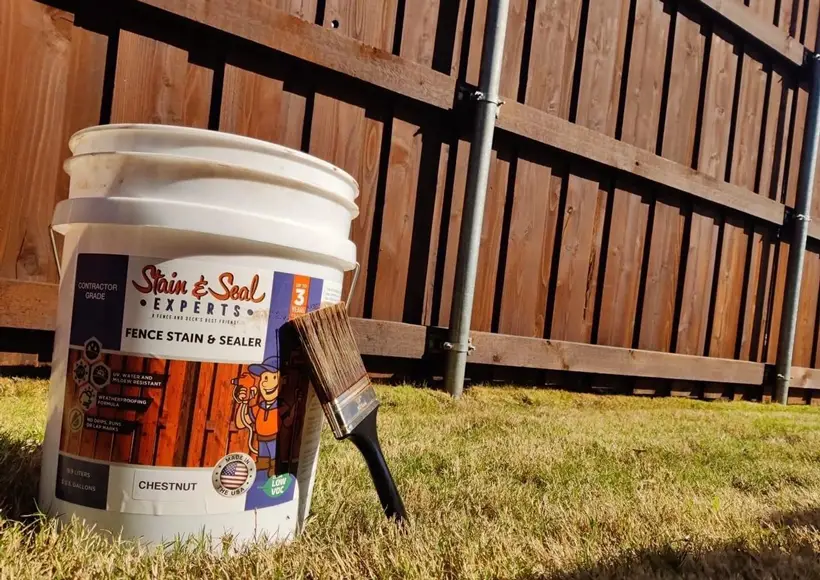
Now, for our top recommendations, we have:
- EXPERT Stain & Seal Fence Stain & Sealer: It has no temperature requirements on the label. The only thing you have to worry about is humidity.
- Olympic Maximum Stain & Sealer: It has weather-ready technology that stains down to 35℉. To boot, it can stain damp wood without worrying about rain or humidity.
- FLOOD Pro Series Solid Color Stain: Stains rain-damp wood down to 35℉.
FAQs
Let’s answer common questions: “Can you stain wood in cold weather?”
Q. At what temperature should you stain wood?
The ideal temperature range is 50°-90℉ or 10°-32℃. However, the best result is achieved at an average of 70℉ or 21℃.
Q. Can you stain wood inside when it’s raining?
No. It’s generally not recommended primarily due to moisture and dilution. Rain introduces excess moisture into the wood, preventing the stain from properly absorbing. Also, diluting the stain reduces its effectiveness and changes its color.
Q. Can you stain wood in hot weather?
No. The heat of the day causes premature drying. That means the paint won’t have time to penetrate as deep as it should. Instead, staining in the early morning/evening hours of warmer days would be a good idea. Just ensure there isn’t too much humidity.
Conclusion
So, in general, if the temperature is consistently below 50℉, staining wood can be quite difficult and more time-consuming. However, if you use oil-based stains formulated for cold weather and properly prepare the wood, you can get acceptable results.
It’s true that some oil-based stain brands are formulated to work down to 35℉. But even then, application and drying time may be more difficult. Generally, our advice is that you wait for warmer and drier conditions before tackling wood staining projects.



